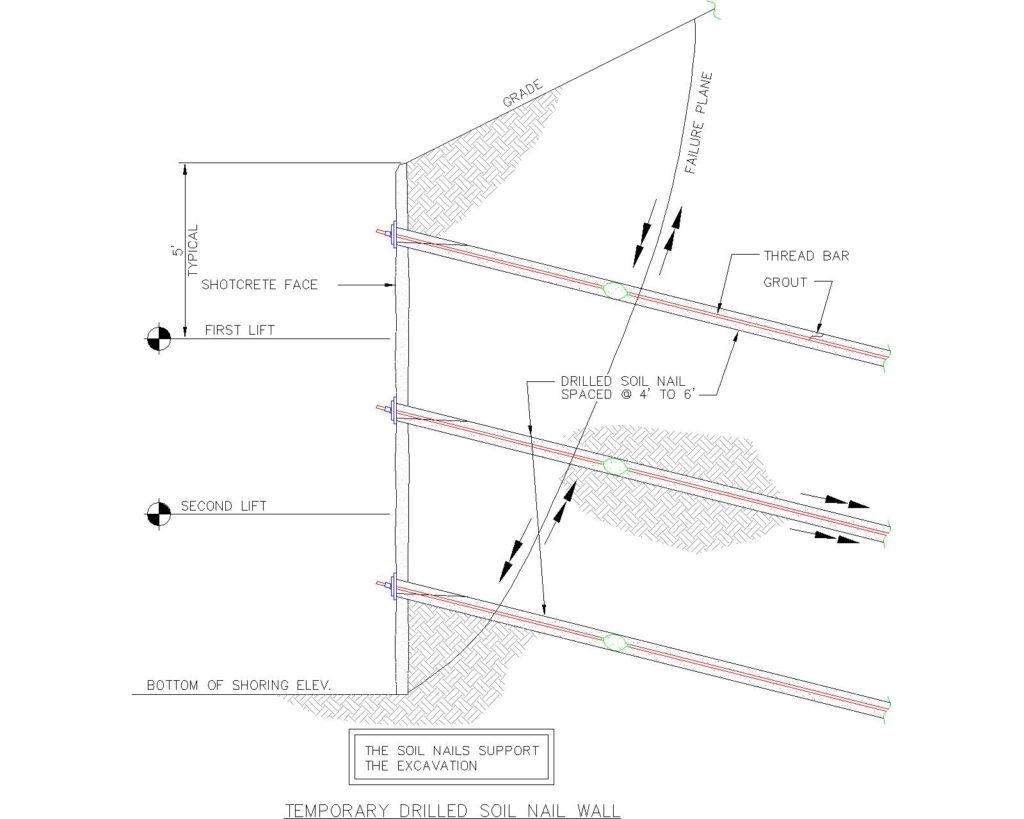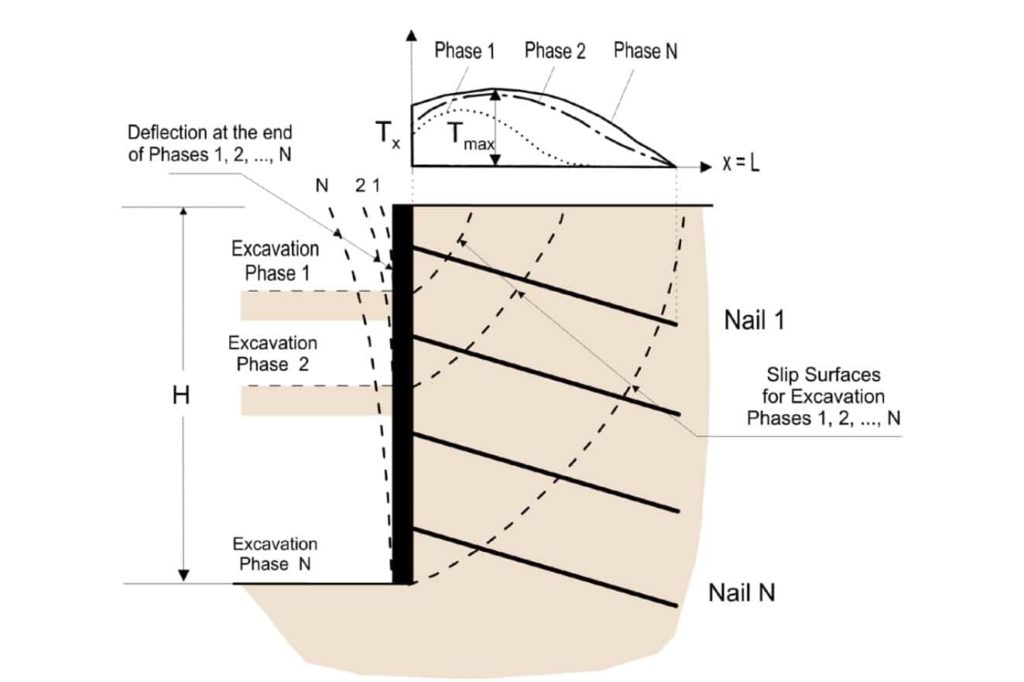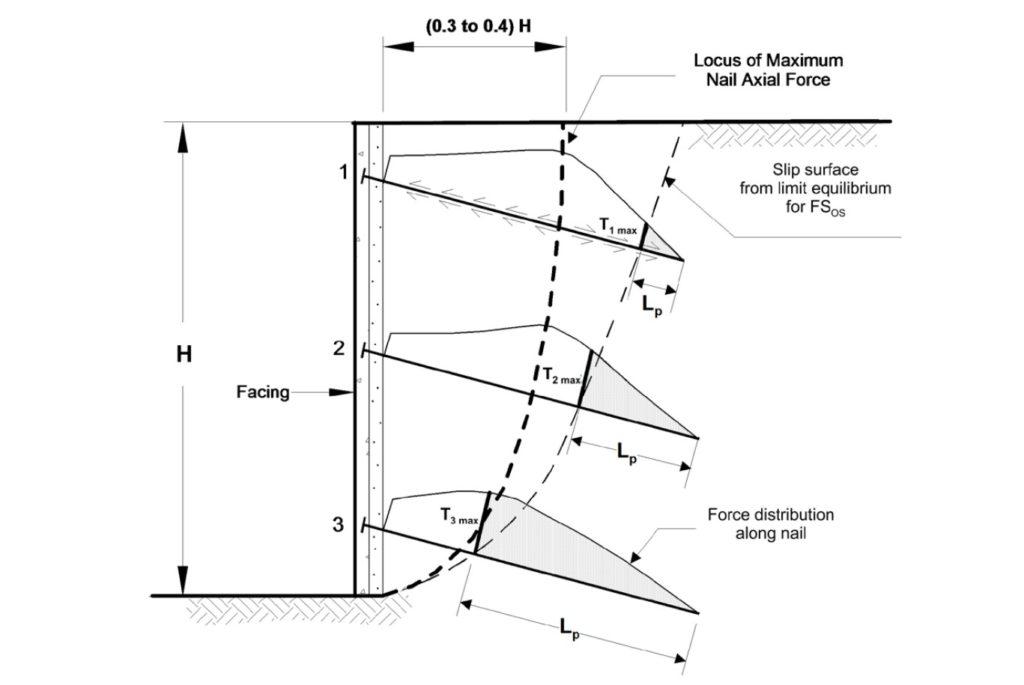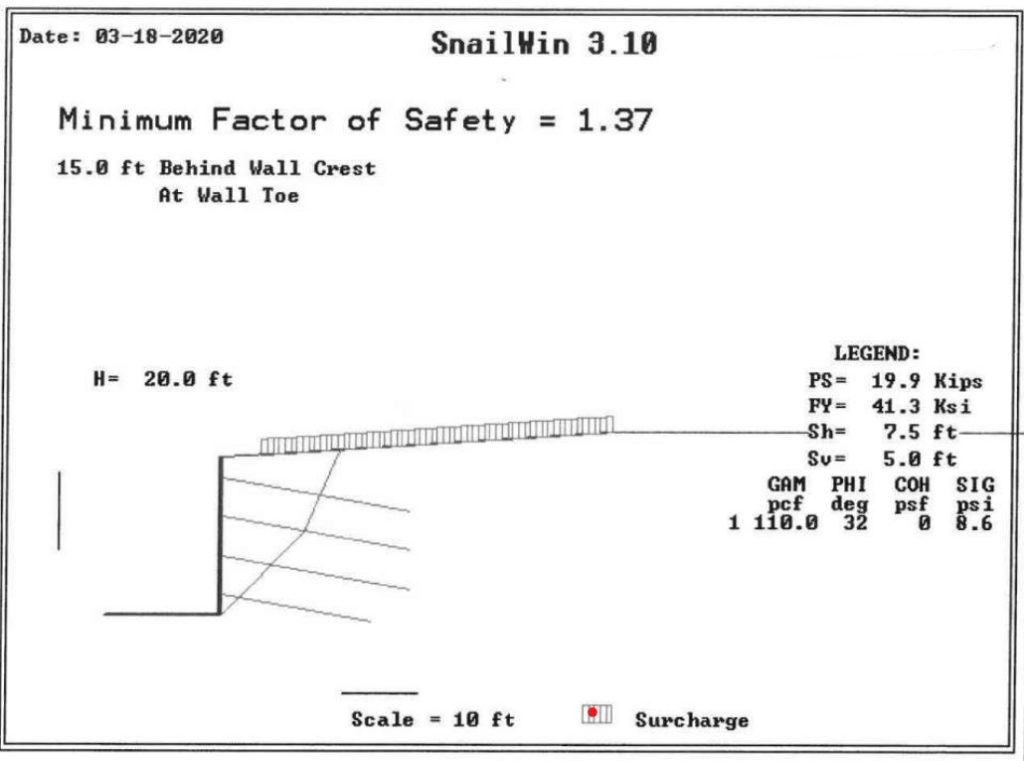How does a soil nail wall work?
Concept
Soil nail walls are typically designed using a limit equilibrium analysis. Think of the sliding block experiment in high school physics lab where you may have calculated what force is required to overcome friction and move a sandpaper block along an incline. In a soil nail wall, as a wedge of soil (see the curved plane in the diagram below) tries to slide into the excavation, the wedge of soil is retained by the soil nails and the friction of the ground moving against itself. The soil nails get their capacity from the friction between the grouted nail hole and the ground.

Soil nails are loaded as the excavation progresses
As the excavation proceeds deeper from lift 1 to lift 2 to the final lift, the slip surface moves further back from the face of the wall. The wall moves outward and the soil nails go into tension and begin resisting the movement. The portion of the nails beyond the slip surface resists the movement by the friction between the drilled nail and the ground surface. Note that we typically make the top rows longer than the lower rows (unlike Figure 5.1) to reduce the lateral movement of the wall. Soil nail walls typically move 0.1% to 0.4% of the wall height or 0.25″ to 1″ for a 20′ tall wall.

Why are soil nail wall faces so thin?
Interestingly, while the friction between the soil nail wall and the ground provides the resisting forces to hold up the wall, the friction also works in reverse and reduces the nail tension at the face of the wall. The soil that moves in front of the slip surface drags along the soil nail wall. As you can see in Figure 5.4, nail tension is at a maximum about 35% of the height behind the wall and is reduced as you move along the length of the soil nail toward the face. This reduction in tension force in the soil nail reduces the punching shear force of the soil nail at the face of the wall.

Soil nail wall design
There are several commercial software products used to design soil nail walls. The majority of the soil nails are designed using a limit equilibrium analysis. For example, the design insures that you have 35% more resisting force than driving force for a factor of safety of 1.35. Occasionally, soil nail walls are designed based on performance to limit movement. In this case the wall would require a design approach that accounts for the stiffness (modulus) of the soil and of the soil nail wall elements. For this type of design a numerical modeling software, such as Plaxis would be used.

